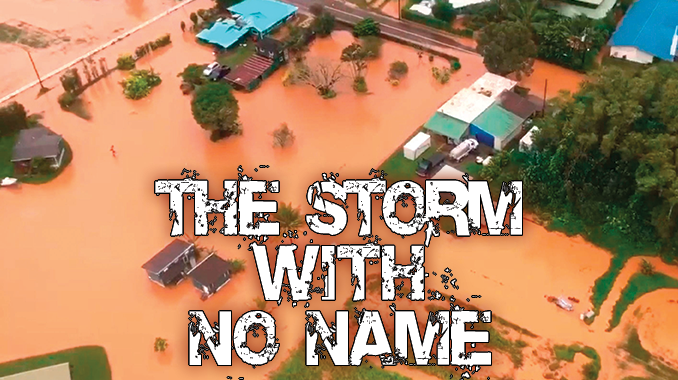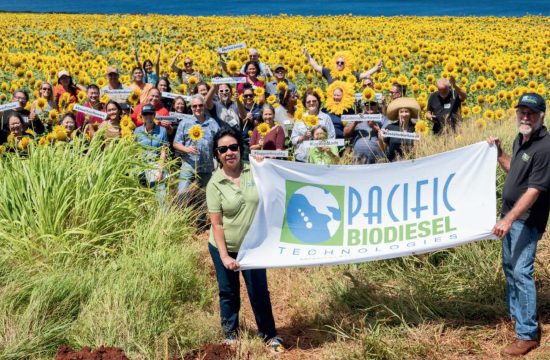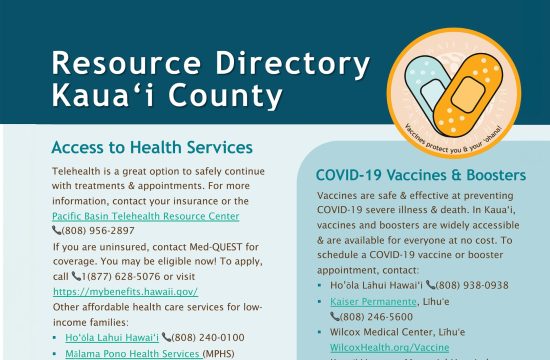
The first thing I’ve learned was how terrifying the storm itself actually was. A reporter for the San Francisco Examiner, Tom Stienstra, was camping in the area and here’s what he wrote: “The rains started as a light mist in the night. The tiny flecks peppered the jungle flora with a light patter. The air was filled with sweetness. An hour later the first lightning bolt of the storm lit up the blackness like a strobe. The thunder that followed was ear-splitting, a high-pitched crack that fractured the sky for nearly 10 seconds. It sounded like the earth was cracking apart and we might fall into the fissure.”
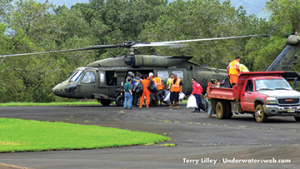
In Kapa’a, this onslaught lasted maybe 3 hours, taking place in the very early morning hours. I live at some elevation in the Wailua Homesteads and there was no flooding danger, but I knew bad things were happening. (And interestingly, people in Kalaheo and Waimea didn’t even know there was a storm going on at all). I’ve had the opportunity to talk with some of you who lived through the North Shore storm and that’s why I used the word “terrifying.” One of our Lifeguards and his fiance’ could hear unusual and powerful sounds outside of his house even through the storm’s own blasting sounds and he realized they had to abandon their house and get to high ground, in a hurry. His decision saved three lives (the 2 of them plus their cat), because just a few minutes later his house was washed away, never to be found.
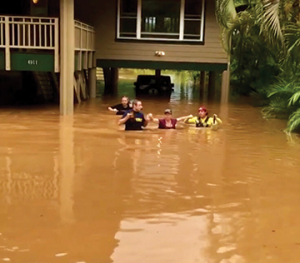
As we all know, no one was killed despite many many close calls. We are all very thankful for that. As we also know, when the storm eased and assessment could be taken, there was huge damage done. This damage is still being addressed as I write, and will be for quite some time to come.
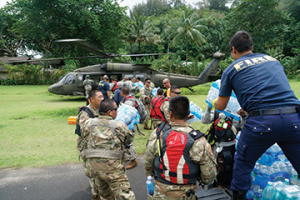
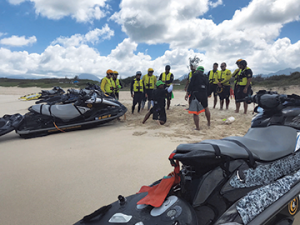
Meanwhile, it was all hands on deck for local heavy equipment contractors as well as for local Haena residents who might have a landscape business with trucks and excavators and such. Downed branches were removed, trash was put into large piles — and emergent work was undertaken to re-establish the North Shore highway. I myself have only the slightest idea of what really too place in this effort. I do know that the military landing craft and heavy-lift chinooks brought in bulldozers and the like, unloading them in the Tunnels area. With this, work on the highway could be done both from the southern Waikoko end as well as from the northern Haena end. The highway disruption was maybe only a couple of miles long, but the work to clear it was amazing and fraught with great danger. There was so much slick mud that trucks and equipment would slide, perilously close to the edge of the cliff. Expert engineers were on hand to study the underpinnings and make sure the narrowed platform was safe.
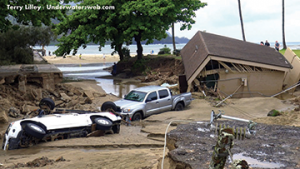
Meanwhile our Lifeguards are back on duty at Haena Beach Park and of course at the 2 Hanalei Towers. In fact Hanalei Beach is full-on busy except for the pier area. Our Junior Lifeguards are having a great training week as I write this piece. And, to swing the conversation away from the North Shore for a moment, South Shore beaches have been smashed with beachgoers and snorkelers, in compensation for Ke’e being shut down. A tip of the hat to our Tower guards (including those at our brand new Nukumoi Tower in Poipu), and to our roving patrol units.
To those who lost their homes and had their lives severely disrupted by the water deluge that happened on April 14 & 15, “What’s done is done”. We sorrow in your suffering, we hope you’re getting good support, and we hope that the strength you’ve had to muster will serve you and your families well as you move forward in your lives.
